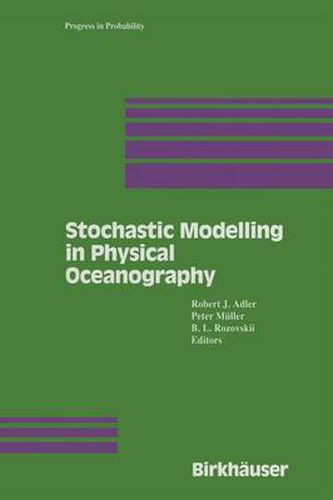Readings Newsletter
Become a Readings Member to make your shopping experience even easier.
Sign in or sign up for free!
You’re not far away from qualifying for FREE standard shipping within Australia
You’ve qualified for FREE standard shipping within Australia
The cart is loading…






This title is printed to order. This book may have been self-published. If so, we cannot guarantee the quality of the content. In the main most books will have gone through the editing process however some may not. We therefore suggest that you be aware of this before ordering this book. If in doubt check either the author or publisher’s details as we are unable to accept any returns unless they are faulty. Please contact us if you have any questions.
The study of the ocean is almost as old as the history of mankind itself. When the first seafarers set out in their primitive ships they had to understand, as best they could, tides and currents, eddies and vortices, for lack of understanding often led to loss of live. These primitive oceanographers were, of course, primarily statisticians. They collected what empirical data they could, and passed it down, ini tially by word of mouth, to their descendants. Data collection continued throughout the millenia, and although data bases became larger, more re liable, and better codified, it was not really until surprisingly recently that mankind began to try to understand the physics behind these data, and, shortly afterwards, to attempt to model it. The basic modelling tool of physical oceanography is, today, the partial differential equation. Somehow, we all ‘know that if only we could find the right set of equations, with the right initial and boundary conditions, then we could solve the mysteries of ocean dynamics once and for all.
$9.00 standard shipping within Australia
FREE standard shipping within Australia for orders over $100.00
Express & International shipping calculated at checkout
This title is printed to order. This book may have been self-published. If so, we cannot guarantee the quality of the content. In the main most books will have gone through the editing process however some may not. We therefore suggest that you be aware of this before ordering this book. If in doubt check either the author or publisher’s details as we are unable to accept any returns unless they are faulty. Please contact us if you have any questions.
The study of the ocean is almost as old as the history of mankind itself. When the first seafarers set out in their primitive ships they had to understand, as best they could, tides and currents, eddies and vortices, for lack of understanding often led to loss of live. These primitive oceanographers were, of course, primarily statisticians. They collected what empirical data they could, and passed it down, ini tially by word of mouth, to their descendants. Data collection continued throughout the millenia, and although data bases became larger, more re liable, and better codified, it was not really until surprisingly recently that mankind began to try to understand the physics behind these data, and, shortly afterwards, to attempt to model it. The basic modelling tool of physical oceanography is, today, the partial differential equation. Somehow, we all ‘know that if only we could find the right set of equations, with the right initial and boundary conditions, then we could solve the mysteries of ocean dynamics once and for all.